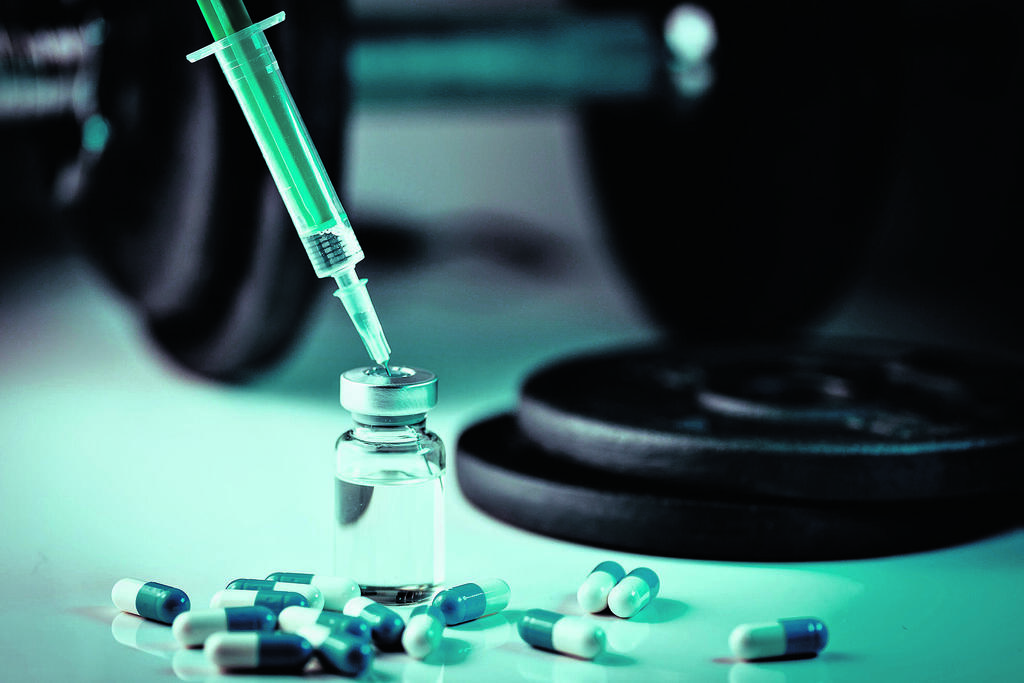The future of doping is no longer just synthetic drugs or hidden blood transfusions—it’s in the genes. Sports medicine experts and anti-doping authorities are sounding the alarm about gene doping: the manipulation of DNA to enhance physical performance. While the practice has yet to be officially detected in athletes, the World Anti-Doping Agency (WADA) is already funding efforts to identify it, led in part by an Israeli-American research team.
“We are preparing for a scenario in which professional athletes attempt to turn themselves into superhuman competitors through advanced genetic manipulation technologies—granting them near-unreal physical capabilities and an unfair edge over rivals, like something out of science fiction,” says Dr. Daniel Hershko, head of the Israel Anti-Doping Agency since 2019.
2 View gallery

(Photo: Wirestock Creators/ Shutterstock)
“This is not only illegal but also dangerous to their health. It’s a real threat—the next generation of doping in sports. Just because we haven’t yet detected such cases doesn’t mean it’s not happening. Back in the 1960s and ’70s, it took time to develop the technologies to detect banned substances that athletes were already using. That’s our working assumption.”
Hershko is overseeing a groundbreaking collaboration involving Prof. Shai Carmi from the Hebrew University and Prof. Kyle Cromer of the University of California, San Francisco. Their team recently received a research grant from WADA to investigate how gene doping might be detected, after the fact. Unlike current testing, which analyzes static biological markers, this project seeks to identify the molecular “scars” left behind by gene editing procedures.
“It’s a groundbreaking approach,” says Hershko. “The way we’re tackling the problem—thinking differently, finding a new angle—is something deeply Israeli.”
Rewriting the athlete’s body
Gene doping refers to the non-therapeutic use of genetic modifications to improve athletic ability. While still hypothetical in elite sport, it poses profound ethical and medical risks. Using technologies such as viral vectors or CRISPR, an athlete could alter gene expression in muscle or bone marrow to permanently increase oxygen delivery, muscle mass or fatigue resistance, without needing repeated doping cycles or injections.
2 View gallery


Dr. Daniel Herstein
(Photo: Private album)
“In simple terms,” Hershko explains, “it could even be a COVID vaccine—where a genetic tweak triggers the body to produce antibodies. Athletes might exploit similar methods to alter their DNA in ways that enhance performance.”
One classic example: boosting the body’s production of erythropoietin (EPO), the hormone that increases red blood cell count and oxygen capacity. While past athletes relied on transfusions or synthetic EPO—methods that carried severe health risks and were eventually detectable—gene doping could prompt the body to produce these enhancements naturally and continuously.
The medical risk
While the performance potential is immense, the list of dangers isn’t far behind. Gene therapy outside clinical supervision can provoke immune reactions, lead to unpredictable mutations or interfere with other genetic functions. And because the modifications affect the body’s own biological pathways, the damage may be irreversible.
In the 1990s, scientists like Lee Sweeney demonstrated how introducing a certain gene into muscle tissue led to rapid hypertrophy. According to Hershko, “athletes have approached these scientists with offers to try this on themselves.”
The biological passport—a longitudinal profile of an athlete’s blood and biological markers—has helped identify anomalies in recent years. But even this method may fall short when faced with genetic alterations that mimic natural variation or fall within accepted physiological ranges.
Tracking the invisible
The Israeli-led project aims to change that. Rather than catching gene doping in the act, researchers hope to spot the molecular footprint it leaves behind—small disruptions or traces within the genome that reveal tampering.
Even though no confirmed cases have been reported, WADA banned gene doping as early as 2003. In recent years, suspicions have grown in the equine racing industry, where genetically enhanced horses may have competed illegally. Similar tactics in human sport remain a possibility, particularly in countries with less stringent bioethical oversight.
“Even if we don’t currently have hard proof that gene doping is happening,” says Hershko, “as Israelis, we’ve learned since October 7 that enforcement agencies can’t afford to rest on their laurels. We must prepare for the next war, not the last one.”
A cost-effective leader
Despite a limited annual budget—about 10% of that of peer countries—the Israel Anti-Doping Agency has positioned itself as an innovator in the global fight against illegal enhancement. WADA’s recent audit ranked it among the top 24 national agencies worldwide.
The agency’s leadership believes that even the possibility of detection may act as a deterrent.
“Our study includes a preventive element,” says Hershko. “The very knowledge that we might be able to detect it could deter athletes from trying.”
